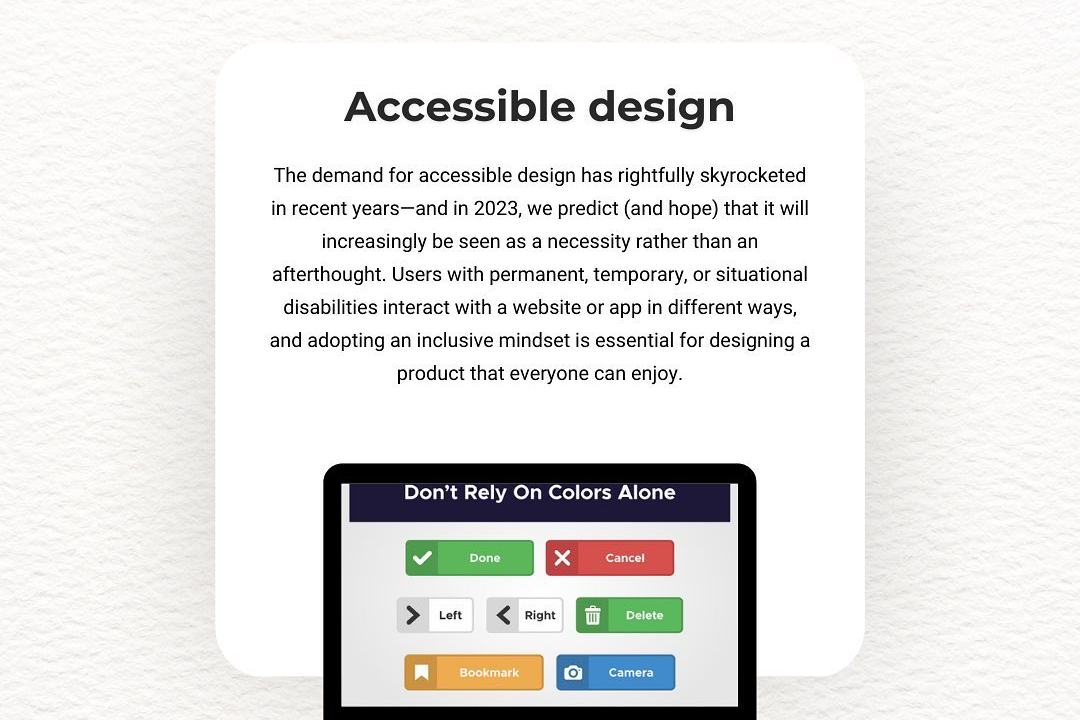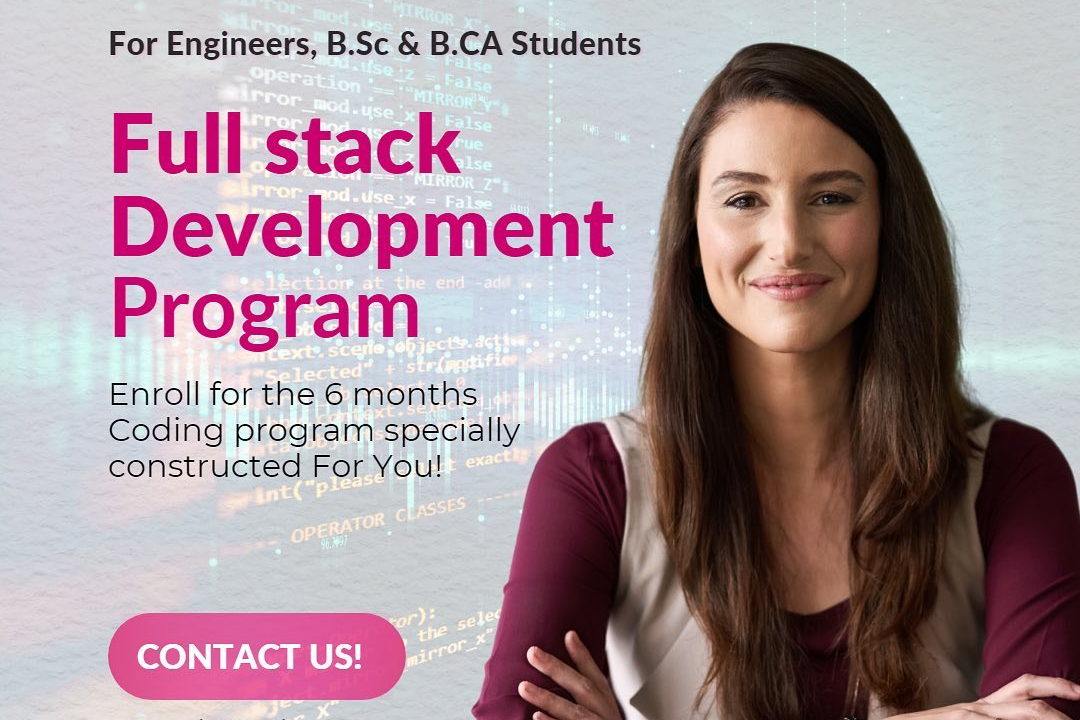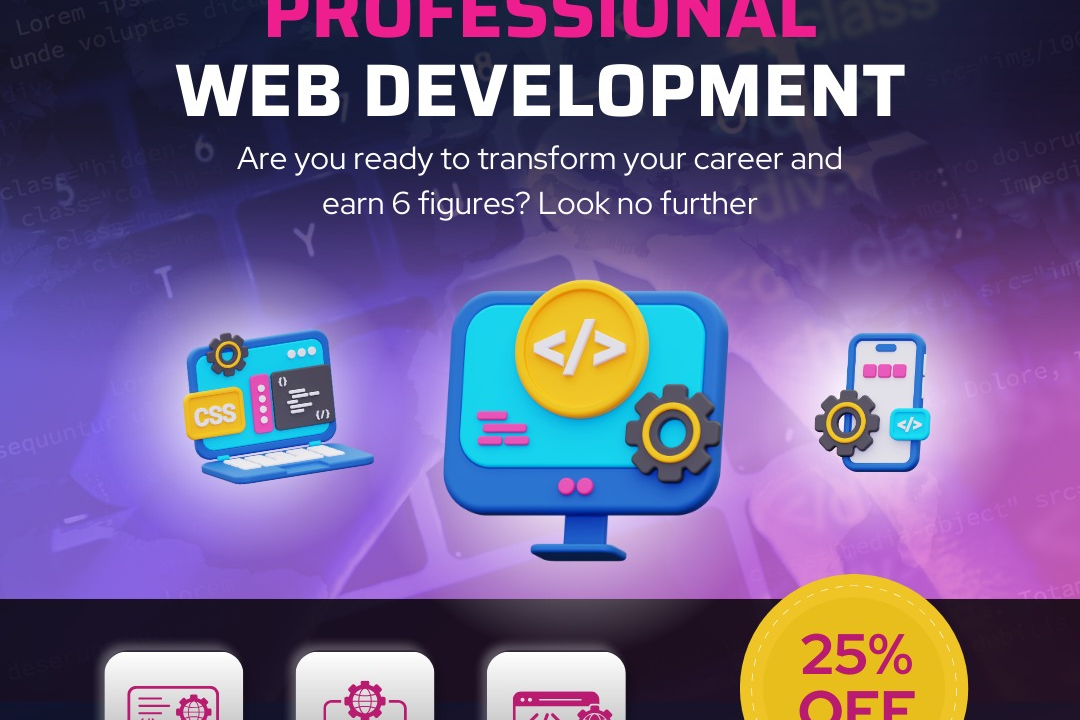laravel interview questions and answers for 3 YEAR EXPERIENCE
Essential Laravel Interview Questions and Answers for Candidates with 3 Years of Experience
laravel interview questions and answers for 3 YEAR EXPERIENCE
Preparing for Laravel interview questions is essential for candidates with around three years of experience, as it showcases both their foundational knowledge and practical application of the framework. At this level, interviewers seek to gauge a candidate's familiarity with Laravel’s core concepts, such as routing, middleware, Eloquent ORM, and dependency injection. Candidates should be prepared to discuss real-world projects where they've implemented these features, demonstrating their problem-solving skills and understanding of best practices. By mastering common interview questions, candidates position themselves as competent developers who can effectively contribute to projects, paving the way for career advancement and opportunities in web development.
To Download Our Brochure: https://www.justacademy.co/download-brochure-for-free
Message us for more information: +91 9987184296
1 - What is Laravel?
Laravel is a PHP framework designed for building web applications following the MVC (Model View Controller) architectural pattern. It provides a robust set of tools and features to facilitate rapid development, including routing, sessions, authentication, and a powerful ORM called Eloquent.
2) Explain routing in Laravel.
Routing in Laravel is defined in the `routes/web.php` file, where you can specify URL endpoints and map them to controller actions or closures. Laravel supports various HTTP verbs, such as GET, POST, PUT, and DELETE, with the ability to group routes, use route parameters, and apply middleware for enhanced functionality.
3) What is Eloquent ORM?
Eloquent ORM is Laravel's built in Object Relational Mapping tool that simplifies database interactions. It allows developers to work with the database using PHP syntax instead of SQL, making it easier to define models, relationships, and perform CRUD (Create, Read, Update, Delete) operations.
4) How does middleware work in Laravel?
Middleware in Laravel acts as a bridge between a request and a response, allowing developers to filter HTTP requests entering the application. It can be used for various tasks, such as authentication, logging, and cross site request forgery (CSRF) protection, enabling you to define actions to be taken before and after a request is processed.
5) What are migrations in Laravel?
Migrations are version control for your database schema in Laravel. They allow you to define database tables and columns in PHP files, which can then be modified and shared across different environments, ensuring consistency and easier management of database changes over time.
6) Describe the service container in Laravel.
The service container in Laravel is a powerful tool for dependency injection and managing class dependencies. It enables developers to bind interfaces to implementations and resolve dependencies automatically, promoting better code organization and testability.
7) What is the purpose of Artisan in Laravel?
Artisan is Laravel's command line interface that provides helpful commands for common tasks, such as generating boilerplate code, running migrations, and clearing caches. Developers can also create custom Artisan commands to automate repetitive tasks efficiently.
8) How do you handle validation in Laravel?
Validation in Laravel can be handled via built in validation rules and methods. You can use the `validate()` method in controllers or define request classes that encapsulate the validation logic, enabling you to easily validate incoming data against defined rules before processing it.
9) Explain the concept of controllers in Laravel.
Controllers in Laravel serve as the middle layer between the model and the view, handling the business logic of the application. They organize the application's request handling and allow for easier management of related routes, promoting the separation of concerns and cleaner code.
10) What are Laravel's resource routes?
Resource routes in Laravel simplify the definition of routes for common CRUD operations. By using the `Route::resource()` method, developers can automatically generate routes for standard actions (index, create, store, show, edit, update, destroy) corresponding to a resource controller.
11 - How do you implement authentication in Laravel?
Authentication in Laravel can be implemented using built in features like Laravel Breeze or Laravel Fortify, which provide scaffolding for user registration, login, and password management. Additionally, you can customize authentication guards and use middleware to protect routes.
12) What are Laravel events and listeners?
Events in Laravel allow you to decouple various parts of your application by firing events that listeners can respond to. This system enhances application modularity, enabling you to trigger actions in response to specific events, such as user registration or order placement.
13) What is Blade in Laravel?
Blade is Laravel's templating engine that simplifies the creation of dynamic HTML content. It provides features like template inheritance, sections, and control structures, making it easier for developers to build responsive and maintainable views for their applications.
14) How can you manage configuration in Laravel?
Configuration in Laravel is managed through files located in the `config` directory. You can access configuration values using the `config()` helper function, and environment variables can be set in the `.env` file, enabling seamless adjustments between different environments.
15) What is the purpose of seeding in Laravel?
Seeding in Laravel allows developers to populate the database with initial data through the use of seed classes. This feature is particularly useful for testing and development, as it enables you to define a dataset that can be easily replicated across different environments.
16) What are Laravel Facades?
Facades in Laravel provide a static interface to classes that are available in the service container. They allow developers to access these classes without needing to instantiate them manually, simplifying the syntax and making the code more readable while retaining the flexibility of dependency injection.
17) Explain the concept of policies in Laravel.
Policies in Laravel are a way to encapsulate authorization logic for specific models or resources. They provide a clean and organized way to control user access, allowing developers to define rules for actions like viewing, creating, or deleting a resource and integrate those rules with routes and controllers.
18) What is the purpose of the `config/app.php` file?
The `config/app.php` file in Laravel serves as the central configuration file for application settings, including the application name, environment, debugging options, timezone, locale, and service providers. It allows developers to customize key aspects of the application globally.
19) How do you implement CSRF protection in Laravel?
CSRF (Cross Site Request Forgery) protection in Laravel is enabled by default for all application's forms. Laravel generates a CSRF token with each form request, which is validated against the session when the form is submitted, helping to prevent unauthorized actions from external sources.
20) What are Laravel Collections?
Laravel Collections are a powerful utility that provides an expressive, fluent interface for working with arrays of data. They come with numerous methods for manipulating, filtering, and transforming arrays, making data handling more intuitive and efficient compared to using standard PHP arrays.
21 - How do you perform database queries using Eloquent?
Eloquent allows developers to interact with the database using a straightforward, fluent syntax. You can define relationships, use methods like `where()`, `orderBy()`, and `take()` to build complex queries, and retrieve data as model instances, making data retrieval simple and expressive.
22) What is the purpose of the `env()` helper function?
The `env()` helper function in Laravel is used to retrieve environment variables defined in the `.env` file. This function allows you to access configuration settings dynamically, making it easier to manage environment specific settings like API keys, database credentials, and application settings.
23) Describe the event broadcasting feature in Laravel.
Event broadcasting in Laravel allows developers to share events between the server side and client side applications in real time. By broadcasting events to WebSocket channels, you can create interactive applications that respond instantly to user actions, enhancing the overall user experience.
24) How can you implement file storage in Laravel?
Laravel offers a unified API for file storage, allowing you to store and retrieve files using the `Storage` facade. You can configure different storage disks (local or cloud based) in the `config/filesystems.php` file and easily perform actions like uploading, downloading, and deleting files.
25) What is Laravel's task scheduling?
Laravel's task scheduling allows you to manage and run scheduled tasks or cron jobs using a fluent, expressive syntax. You can define scheduled commands in the `app/Console/Kernel.php` file, significantly simplifying the setup and execution of periodic tasks without the need for manual cron entries.
26) Explain the use of the `response()` helper in Laravel.
The `response()` helper in Laravel is used to create HTTP responses easily. It allows developers to return JSON, XML, or HTML responses from controllers and includes methods to set status codes, headers, and content types, facilitating standardized response formats across the application.
27) What is the purpose of the `routes/api.php` file?
The `routes/api.php` file in Laravel is specifically designated for defining API routes. It is intended to handle stateless requests, typically using JSON responses and may include route grouping, API versioning, and middleware, ensuring a clean separation between web and API routing.
28) How do you implement pagination in Laravel?
Pagination in Laravel can be implemented using the `paginate()` method provided by Eloquent. This method automatically handles data splitting, generating the necessary SQL queries to limit results per page, and provides pagination links for easy navigation through the dataset.
29) What are Laravel Mix and its purpose?
Laravel Mix is a tool that simplifies the asset compilation process, enabling developers to define Webpack build steps through a clean and expressive API. With Mix, you can compile CSS and JavaScript files, handle versioning, and optimize assets for production environments with minimal configuration.
30) How does Laravel handle errors and exceptions?
Laravel provides a simple and customizable error handling mechanism out of the box. It automatically catches exceptions and renders appropriate HTTP responses, allowing developers to define custom exception handling in the `app/Exceptions/Handler.php` file, enhancing debugging and user experience.
31 - What is the significance of service providers in Laravel?
Service providers in Laravel are the central place to configure and register bindings within the service container. They allow you to define how certain services are instantiated and can perform important bootstrapping tasks during the application's request lifecycle, promoting modular application design.
32) How does caching work in Laravel?
Laravel provides a unified API for caching data across various storage systems (like file, database, and Redis). You can use the `Cache` facade to store, retrieve, and manage cached data, greatly improving application performance by reducing the need for repetitive database queries or expensive calculations.
33) What are Laravel queues?
Queues in Laravel provide a way to defer time consuming tasks, such as sending emails or processing uploads, to a later time, enhancing the user experience by speeding up response times. Laravel supports multiple queue backends, and you can use the `dispatch()` method to push jobs onto the queue for asynchronous processing.
34) Explain unit testing in Laravel.
Unit testing in Laravel is facilitated by PHPUnit and the framework's testing capabilities. Developers can write tests to ensure the correctness of their code, using features like factories, database migrations, and the built in assertion methods. This ensures better code quality and reduces bugs in production environments.
35) What are Laravel's CSRF tokens, and how are they used?
Laravel uses CSRF tokens to protect your application from cross site request forgery attacks. Every form generated by Laravel includes a hidden input field containing a CSRF token, which is validated against the session on form submission, ensuring that the request is legitimate and not coming from a malicious source.
These points can serve as additional insights into advanced concepts, features, and functionalities of Laravel, making them great for articles, tutorials, or training materials on your platform, JustAcademy.
Course Overview
The “Laravel Interview Questions and Answers for 3 Years Experience” course is designed to equip developers with the essential knowledge and insights needed to excel in technical interviews focused on Laravel, a powerful PHP framework. This comprehensive program covers a range of advanced topics, including Eloquent ORM, routing, middleware, authentication, and performance optimization, tailored specifically for candidates with three years of experience. Participants will engage with a curated selection of common and challenging interview questions, gain practical insights into best practices, and explore real-world scenarios that developers frequently face. By the end of the course, students will feel confident in their ability to demonstrate expertise in Laravel, effectively articulating their skills and experiences to potential employers.
Course Description
The “Laravel Interview Questions and Answers for 3 Years Experience” course is meticulously crafted for developers looking to enhance their interview readiness in Laravel, the renowned PHP framework. This course delves into key concepts and features, such as Eloquent ORM, routing, middleware, and authentication, while presenting a myriad of common and advanced interview questions. Participants will not only gain practical insights and best practices but will also engage with real-world scenarios that arise in Laravel development. By the end of this course, learners will be well-prepared to confidently showcase their expertise, effectively communicating their skills and experiences to impress potential employers during technical interviews.
Key Features
1 - Comprehensive Tool Coverage: Provides hands-on training with a range of industry-standard testing tools, including Selenium, JIRA, LoadRunner, and TestRail.
2) Practical Exercises: Features real-world exercises and case studies to apply tools in various testing scenarios.
3) Interactive Learning: Includes interactive sessions with industry experts for personalized feedback and guidance.
4) Detailed Tutorials: Offers extensive tutorials and documentation on tool functionalities and best practices.
5) Advanced Techniques: Covers both fundamental and advanced techniques for using testing tools effectively.
6) Data Visualization: Integrates tools for visualizing test metrics and results, enhancing data interpretation and decision-making.
7) Tool Integration: Teaches how to integrate testing tools into the software development lifecycle for streamlined workflows.
8) Project-Based Learning: Focuses on project-based learning to build practical skills and create a portfolio of completed tasks.
9) Career Support: Provides resources and support for applying learned skills to real-world job scenarios, including resume building and interview preparation.
10) Up-to-Date Content: Ensures that course materials reflect the latest industry standards and tool updates.
Benefits of taking our course
Functional Tools
1 - Laravel Framework
The primary tool utilized in this course is the Laravel framework itself. Laravel is a powerful PHP framework that simplifies the development of web applications through its expressive syntax and robust features. It offers a rich set of functionalities, such as routing, middleware, templating, and an ORM (Eloquent), which are crucial for building scalable and maintainable applications. Understanding Laravel's architecture and components equips students with the foundational knowledge needed to tackle real world projects effectively.
2) PHP
Since Laravel is built on PHP, a strong command of PHP is essential. This course emphasizes PHP fundamentals, focusing on object oriented programming and advanced PHP features like namespaces and traits. This enables students to write cleaner, more efficient code within the Laravel framework. A solid background in PHP is indispensable, as it allows learners to troubleshoot issues effectively and implement complex logic in their applications.
3) Composer
Composer is a dependency management tool used in PHP development, including Laravel applications. It allows developers to manage libraries and packages seamlessly, ensuring that the correct versions of software dependencies are used in projects. In this course, students learn how to install and manage Laravel and its components through Composer, understanding how to handle updates and resolve conflicts between libraries. Mastery of Composer simplifies project setup and maintenance, making it a critical tool for any Laravel developer.
4) MySQL Database
MySQL is one of the most commonly used relational database management systems in conjunction with Laravel. The course provides students with hands on experience in designing and implementing databases, writing SQL queries, and interacting with MySQL using Laravel's built in database abstraction layer. Knowledge of database relationships, migrations, and Eloquent ORM is a focal point of the program, enabling students to manipulate data effectively and create dynamic applications that communicate with databases.
5) Laravel Artisan
Laravel includes a command line interface known as Artisan, which streamlines common tasks in the development process. Students in this course learn how to utilize Artisan to perform operations such as database migrations, task scheduling, and generating boilerplate code for controllers and models. Mastering Artisan enhances productivity by allowing developers to automate repetitive tasks, contributing to faster development cycles and more organized codebases.
6) Postman
Postman is an essential tool for testing APIs, which is a critical aspect of modern web applications. The course incorporates Postman to teach students how to test the endpoints of their Laravel applications efficiently. Students learn to create, send, and analyze HTTP requests and responses, ensuring that their applications work as intended before deployment. Mastery of Postman contributes to better debugging and guarantees that applications adhere to intended functionalities and user requirements.
7) Git
Version control is vital in any development environment, and Git is the industry standard. This course introduces students to Git for managing code changes, collaborating with other developers, and keeping track of project history. Learning Git enables students to participate effectively in team projects, knowing how to branch, merge, and resolve conflicts. Understanding Git practices ensures that students know how to maintain code integrity while working in agile development environments.
8) Docker
Understanding containerization with Docker is integral to modern web development practices. The course introduces students to Docker, enabling them to create, deploy, and manage applications within containers. This knowledge allows participants to simulate production environments accurately, ensuring that their Laravel applications run consistently across different systems. Docker enhances collaboration among teams and leads to more reliable deployment processes, making it a valuable tool for any Laravel developer.
By utilizing these tools throughout the training program, learners are better equipped to handle real world challenges and become proficient Laravel developers. The emphasis on practical application ensures that students not only understand the theory but can also implement their knowledge in professional settings.
Certainly! Here are additional key topics and tools that enhance the Laravel development experience in your course at JustAcademy:
9) RESTful API Development
The course focuses on building RESTful APIs using Laravel, teaching students to create APIs that adhere to REST principles. Learners will explore how to structure controllers and models, manage routing, and utilize middleware for authentication and authorization. Understanding RESTful architecture prepares students for integrating their applications with external services and supports modern web application requirements.
10) Frontend Integration
While Laravel primarily focuses on backend development, integration with frontend technologies is crucial. This course covers how to work with JavaScript frameworks like Vue.js or React alongside Laravel. Students learn to build single page applications (SPAs) and enhance user experience by utilizing Laravel’s resources in combination with frontend frameworks.
11 - Testing and Debugging
A significant part of development is ensuring code quality through testing. Students will learn how to write unit tests and feature tests in Laravel using PHPUnit and Laravel's built in testing capabilities. This practical approach to debugging and testing ensures applications are robust and less prone to errors when deployed, ultimately leading to higher quality deliverables.
12) Middleware and Security
Understanding middleware in Laravel allows students to implement various security protocols, such as authentication and authorization. The course emphasizes creating custom middleware and using Laravel’s built in features to protect applications from common vulnerabilities such as SQL injection and cross site scripting (XSS). Learning best practices for application security is essential for building safe and reliable applications.
13) Event Broadcasting and Queues
For real time applications, understanding event broadcasting and queues is vital. This course covers how to use Laravel’s event system to decouple various components of an application and to handle background jobs with queues. Students will work with tools like Redis or Beanstalkd to manage job processing, enhancing application performance and user experience.
14) Laravel Mix
Laravel Mix simplifies the process of compiling and optimizing assets. Students will learn to utilize Mix to manage JavaScript, CSS, and other assets effectively, ensuring their applications are fast loading and visually appealing. By mastering asset management with Laravel Mix, learners can improve the frontend performance of their applications.
15) Deployment Techniques
Understanding how to deploy Laravel applications is critical for any developer. The course covers various deployment strategies, including shared hosting, VPS, and cloud services like AWS and Heroku. Students will learn best practices for configuring environments, managing environment variables, and executing database migrations during deployment to ensure smooth transitions from development to production.
16) Laravel Nova
For those interested in backend administration, Laravel Nova is an administration panel for Laravel applications. Students will explore how to set up and customize Nova, creating beautiful and functional dashboards. Nova simplifies the management of application data, allowing students to focus on building robust features.
17) API Authentication
Understanding API authentication is crucial in today’s web development landscape. The course includes lessons on creating secure RESTful APIs using token based authentication methods, such as Laravel Passport or JWT (JSON Web Tokens). Students learn how to implement these authentication strategies to safeguard their applications and protect user data.
18) Community and Resources
Engaging with the Laravel community provides invaluable resources for continued learning and support. This course encourages students to participate in forums, online communities, and meetups, fostering connections that can aid their professional development. Sharing knowledge fosters growth and innovation within the development ecosystem.
19) Building a Portfolio Project
One of the highlights of the course is the opportunity to create a comprehensive capstone project that encompasses all learned concepts. Students will build a fully functional Laravel application as their portfolio piece, demonstrating their skills to potential employers. This real time project not only strengthens their understanding but also provides tangible evidence of their capabilities.
20) Career Development and Certification
Upon completion of the course, JustAcademy offers certification to validate the skills acquired. Students will also receive guidance on preparing for job interviews, including coding challenges and discussions on best practices in a collaborative environment. This focus on career development ensures learners are job ready and equipped to enter the workforce confidently.
By incorporating these additional points, your Laravel course at JustAcademy becomes even more comprehensive, equipping students with a wide range of essential skills and knowledge for a successful career in web development.
Browse our course links : https://www.justacademy.co/all-courses
To Join our FREE DEMO Session: Click Here
This information is sourced from JustAcademy
Contact Info:
Roshan Chaturvedi
Message us on Whatsapp: +91 9987184296
Email id: info@justacademy.co
Apple Ios Qa Interview Questions
Ios Web Service Interview Questions
Ios Interview Questions For Experienced











